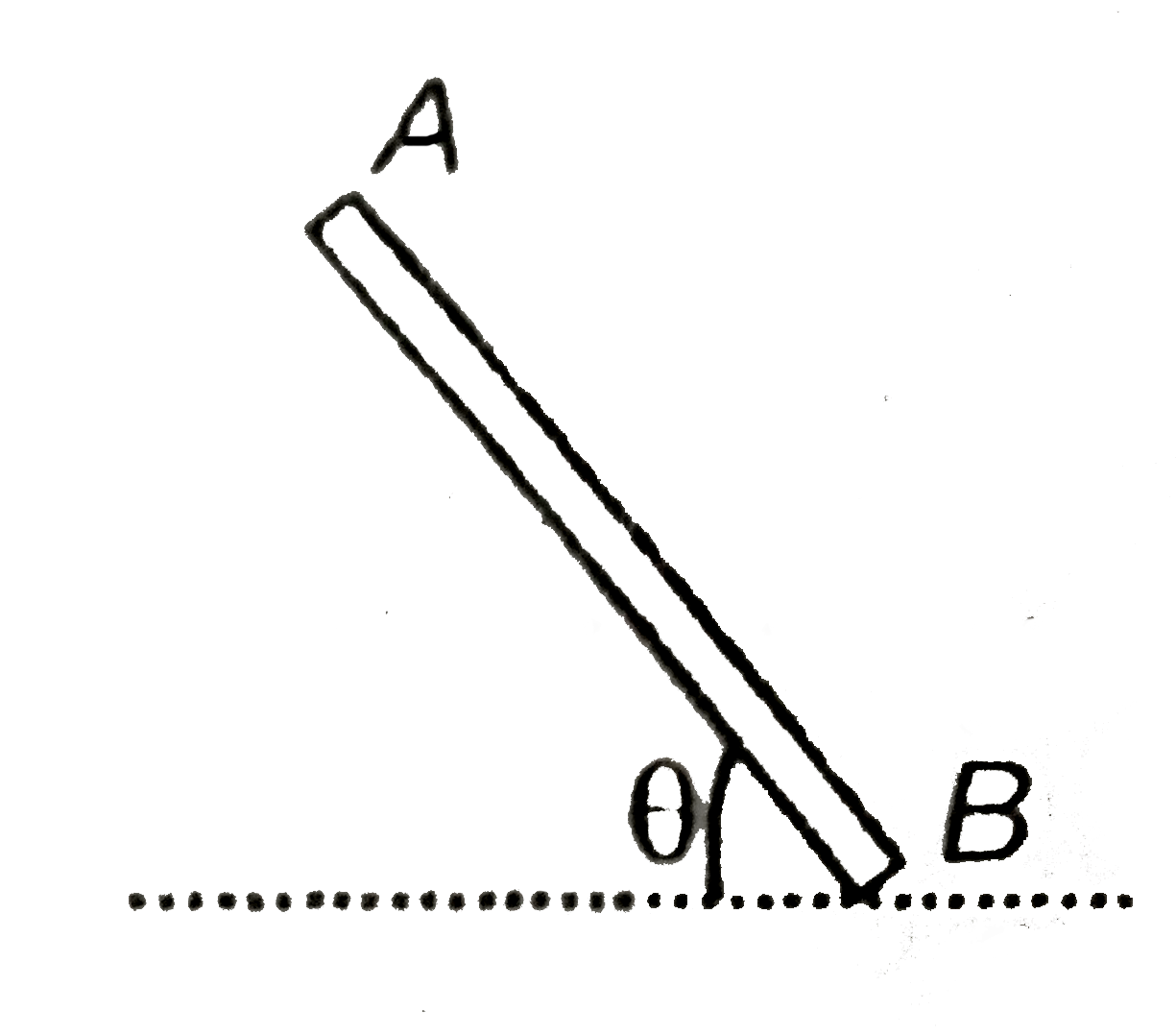A uniform rod BC with length a is attached to a light string AC. End A of the string is fixed to the ceiling and the end B of the rod is on a smooth horizontal surface. B is exactly below point A and length AB is b(a<b<2a). The system is released from rest and the rod begins to slide. Find the speed of the centre of the rod when the string becomes vertical.

The correct Answer is:v=√(s(a−b2))
Topper's Solved these Questions
Similar Questions
A uniform rod of mass m length l is attached to smooth hinge at end A and to a string at end B as shown in figure. It is at rest. The angular acceleration of the rod just after the string is cut is :

View SolutionA uniform rod AB of mass m and length l is at rest on a smooth horizontal surface. An impulse J is applied to the end B perpendicular to the rod in horizontal direction. Speed of the point A of the rod after giving impulse is:
View Solution
Knowledge Check
A uniform rod of mass m length l is attached to smooth hinge at end A and to a string at end B as shown in figure. It is at rest. The angular acceleration of the rod just after the string is cut is :
 A3g2lB3g4lC5g4lD5g2l
A3g2lB3g4lC5g4lD5g2lThe ring R in the arrangement shown can slide along a smooth, fixed, horizontal rod XY. It is attached to the block B by a light string. The block is released from rest, with the string horizontal
 AOne point in the string will have only vertical motionBR and B will have momenta of the same magnitude.CWhen the string becomes vetical , the speed of R and B Will be directly propertionaly to their massesDR will lose constant with the rod at some point
AOne point in the string will have only vertical motionBR and B will have momenta of the same magnitude.CWhen the string becomes vetical , the speed of R and B Will be directly propertionaly to their massesDR will lose constant with the rod at some point
The ring R in the arrangement shown can slide along a smooth, fixed, horizontal rod XY. If is attached to the block B by a light sring. The blocks is released from rest, with the string horizontal.AOne point in the string will have only vertical motionBR and B will always have momenta of the same magnitudeCWhen the string becomes vertical, the speeds of R and B will be inversely proportional to their massesDR will lose contact with the rod at some point
A rod AB of mass M and length L is shown in figure. End A of rod is hinged and end B is lying on the ground. Find the

Normal reaction by ground on the rod
View SolutionThe ring R in the arrangement shown can slide along a smooth fixed, horizontal rod XY. It is attached to the block B by a light string. The block is released from rest, with the string horizontal. Then which of the following are true.

View SolutionA uniform rod of length 2a is held with one end resulting on a smooth horizontal table makin an angle α with the vertical. When the rod is released,
View SolutionA uniform rod AB of mass m and length l is at rest on a smooth horizontal surface. An impulse p is applied to the end B. The time taken by the rod to turn through a right angle is
View SolutionA uniform rod of length 15 cm is suspended from a fixed point by two strings of length 9 cm and 12 cm attached at its ends. If the inclination of the rod to the vertical is θ then sinθ is equal to
View Solution
